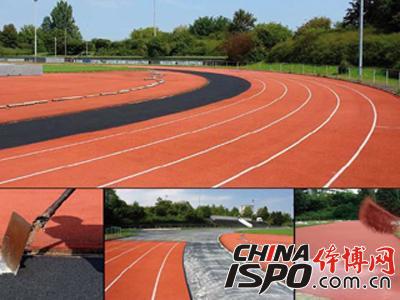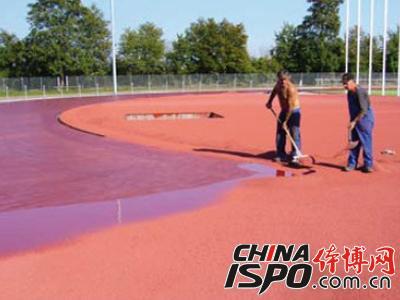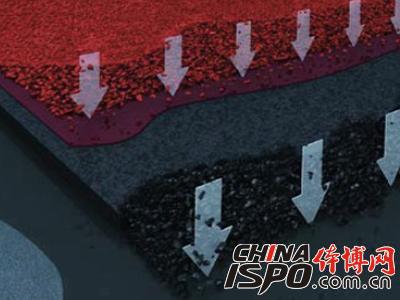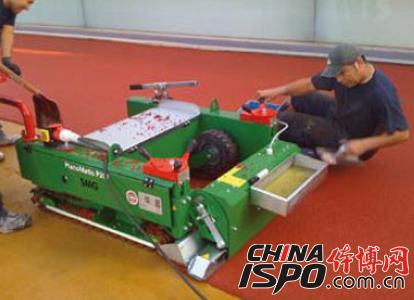Many of the playgrounds on campus today feature plastic runways that look sleek and professional. However, experts have raised concerns that these runways may release harmful gases, potentially affecting students' health. Track and field events are now more popular than ever, and the 400-meter plastic track has become a common sight. But what exactly makes up this type of track?

*Runway laying screen*
In China, most plastic tracks are made from industrial polyurethane, also known as toluene diisocyanate (TDI). This material is mixed with adhesives and curing agents before being laid down. The final product includes TDI, curing agents, and binders—all organic compounds that can emit irritating gases when exposed to heat or sunlight. Many students and teachers have reported noticing a strong smell after using the track, raising concerns about long-term health effects.
Despite the high cost of installing these runways, many schools have restricted their use. Some campuses limit access by closing off the areas with fences, while others restrict open hours. These measures are partly due to the need to protect the surfaces from excessive wear, as well as to ensure proper maintenance over time.
The evolution of track and field facilities has moved away from traditional coal cinder tracks toward synthetic materials. While the general public may not be aware of the differences between these surfaces, understanding their composition and performance is important for safety and efficiency. This article explores the structure, installation, and benefits of modern plastic runways.
**The origin of "plastic runway"**
When designing an outdoor stadium, the layout typically includes a football field surrounded by a 400-meter running track. This setup is standard in many sports facilities. While some stadiums still use coal cinder tracks, synthetic materials are becoming more common. In the West, these are often called "tartan tracks," named after a synthetic product introduced in the 1960s. These tracks offer better protection for athletes and create a fairer playing environment.
Although the design hasn't changed much over the years, the materials have evolved significantly. Today's synthetic tracks are more durable and require less frequent replacement compared to artificial grass, which typically lasts around 10 years.
**Foundation layer – invisible but feels**

*Workers Spread EPDM Particles*
According to German standards, synthetic tracks should have an asphalt base, an elastic layer, and a top surface made of EPDM particles and polyurethane. The grainy texture comes from the EPDM particles, which are embedded into the polyurethane. Some tracks skip the elastic layer, making the surface thicker instead. Different manufacturers use various materials, leading to variations in performance, such as UV resistance, durability, and temperature tolerance.
**Installation method**

*On-site construction installation runway*
There are several ways to install a plastic track. One method involves building everything on-site, while another uses prefabricated sections. Some tracks are installed by covering old surfaces, and others are produced as coils and transported to the site. Each method affects the quality and longevity of the track. On-site installations require careful layering, while hybrid methods involve pre-bonding parts at the factory before final assembly.
**Prefabricated runway**

*Use the machine to install the runway*
Fully prefabricated tracks are installed like sheet flooring and are used in major competitions like the Olympics. They offer superior performance, comfort, and speed. Unlike on-site constructions, they are manufactured in controlled environments, ensuring consistent quality. These tracks are easy to move and maintain, making them ideal for high-level events. Despite their advantages, they are not yet widely adopted due to higher costs and specialized installation requirements.
Customized Toys,Customized Adhesive Toys,Drip Glue Toys,Cartoon Adhesive Toys
DONGGUAN TETSUMET TECHNOLOGY CO.,LTD , https://www.tetsumet.com